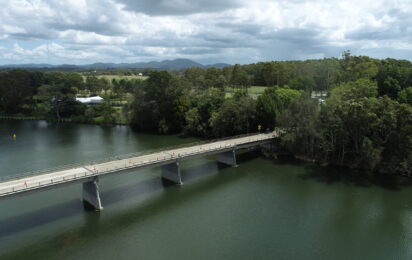A Subiaco landmark for more than 60 years, Wandana Apartment Block has recently undergone restoration works to preserve its function as social housing, as well as its historical significance to Western Australia.
Wandana: A brief history
In the early 1950s, post-World War II and right in the middle of the baby boom, Western Australia was hit by a shortage of affordable housing. In an effort to fill the gap and put a roof over the heads of those most in need, the state government approved the development of a high-density housing scheme in February 1954. Known variously as Wandana Apartment Block, Wandana Flats and Wandana State Housing Complex, the group of three buildings comprised the first multi-storey public housing development in WA and, possibly, the entire country.
Construction began in 1954 and took 18 months to complete. While the estimated cost of the development was £550,000 ($20.2 million in today’s money), the final project came in at £455,000 ($15.6 million today). Wandana was officially opened by the Minister for Housing, Herb Graham, on 15 March 1956. In 2012, the complex was listed on the State Register of Heritage Places.
The three buildings – A, B and C
Wandana is located on Thomas Street in Subiaco and consists of three structures – Block A, a 10-storey tower consisting of 109 one-bedroom flats; Block B, a three-storey building containing 64 one-bedroom flats; and Block C – another three-storey building comprising 69 two-bedroom flats. All in all – 242 apartments dedicated to social housing, a sector the complex still services today.
Architects Krantz and Sheldon designed Wandana in the ‘post-war international’ style, known for its rectilinear form, clean lines and lack of adornment. The buildings are positioned so as to provide access to central gardens.
Griffiths Architects’ role
Award-winning, Perth-based Griffiths Architects were appointed by the Department of Communities to assist in the attainment of the requisite approvals from the Heritage Council of Western Australia and the Western Australian Planning Commission. The practice also provided superintendence to ensure restoration works would not compromise Wandana’s State Register listing. Strict supervision ensured that works were like-for-like and remained true to the fabric and form of the buildings.
The investigation
With the safety of both tenants and visitors front-of-mind, the Department of Communities was seeking a contractor to undertake repairs to Wandana Apartment Block. In the beginning, it was thought that the project would consist of concrete repair and other minor works. Duratec was engaged to undertake an initial condition assessment.
While an inspection of the complex had been carried out years earlier and a defects register created, Duratec’s engineers undertook a second investigation across all three buildings – A, B and C – and discovered additional areas of deterioration. Stage one works, however, were to incorporate only the ground level of A block and all levels of B block, across which 400 concrete defects were identified.
After reviewing the inspection report and updated defects register, the department gave Duratec the go-ahead to undertake remediation works.
The works
Duratec’s crew mobilised on site in January 2022 and, upon breakout of the concrete, discovered that the extent of the deterioration was greater than the original assessment would have suggested. In some areas, for example, further degradation had occurred as a result of low cover (cover being the space between the outside of the concrete surface and the internal steel reinforcement).
A structural engineer was engaged to assess for structural capacity and provide methodologies for both
conventional (planned) and non-conventional (previously unidentified) repairs. Conventional repairs addressed concrete deterioration, especially to balconies, while non-conventional repairs consisted of cracking to stairs, and the faces of both walkway balustrades and balconies.
Stage one of the initial repair works to Wandana took about six months to complete with partiality A and B block handed over in July 2022. Further works are expected to be decided upon soon and delivered over the next few years.











